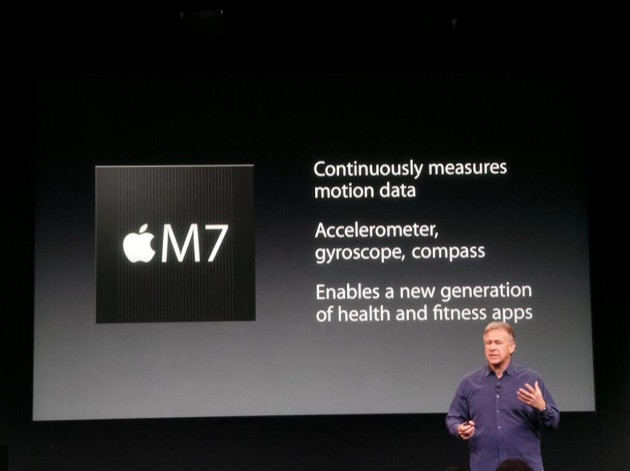Apple iWatch Rumors: What The iPhone 5S Says About The Smart Watch's Release Date

While the majority of the new features introduced by the Apple iPhone 5S had been leaked by tech reporters before last Tuesday’s event, Apple Inc. (NASDAQ:AAPL) was somehow able to keep the new M7 chip a surprise. The M7 chip is designed to assist the main chip in the iPhone 5S, the A7, by handling motion data coming from the iPhone 5S’s accelerometer, gyroscope and compass.
Apple said that the M7 will help the iPhone 5S save battery power when running navigation and fitness apps, but this seems like a pretty minor reason for including an entirely new processor in Apple’s flagship device. The M7 chip may actually have a much more crucial role in Apple’s plans: the coming of the iWatch.
Apple has a history of testing out new technology in devices that don’t necessarily need it. Before introducing LTE technology into the iPhone, Apple gave it to the iPad 3. Many criticized the decision at the time, wondering why Apple would put LTE into a tablet and not its smartphone, especially when competing smartphones already featured LTE technology.
It gave Apple time to work out the bugs on a different iOS device where LTE wouldn’t really affect performance. Six months after the debut of the iPad 3, Apple released the iPhone 5 with LTE.
Older iPhones have already performed perfectly fine with navigation and motion detection without the M7 chip. So though it probably will improve battery life, it isn’t a necessary feature for the iPhone 5S. It seems logical that Apple is once again testing the chip for a future device.
But why would this suggest the iWatch? The M7 chip is not designed to operate alone, but rather work in tandem with the A7 chip. Similarly, devices like smart watches are intended to act as companions to smartphones and tablets, judging by how technology companies are currently approaching wearable technology.
Having the M7 chip in the iPhone or iPad means the primary device can process the majority of the data gathered by the iWatch. This could vastly increase the battery life of the iWatch, which Apple is reportedly trying to stretch to a full seven days. The short battery life has been a primary complaint of the Samsung Galaxy Gear, the current device to beat in the smart watch market.
When Apple introduced the M7 chip, it mentioned fitness apps and battery power, two of the biggest appplications of smart watches. It also mentioned the sensitivity of the M7 chip, noting that it has the ability to detect if the user is driving or walking and switch a Maps app accordingly. This sort of synchronicity is exactly what a device like an iWatch would be doing.
One last point: why would Apple test the M7 chip in the iPhone 5S, its flagship device, and introduce it in the iPad 5? Apple sells many more iPhones than it does iPads. When it comes time to release the iWatch, it wants as many people as possible to be able to able to use, and purchase, the smart watch.
It also may give a clue towards the iWatch release date. If Apple is following a similar six-month strategy with the M7 chip as it did with LTE technology, that means the iWatch could be revealed in March 2014. History also supports March as month favored by Apple to release new technology. In March 2012, Apple revealed updates to the iPad, Apple TV and iPhoto.
We all know that the iWatch is coming. The M7 chip in the new iPhone 5S may be Apple’s first move to lay the foundation for the smart watch.
© Copyright IBTimes 2024. All rights reserved.






















